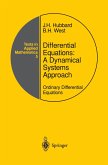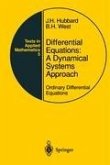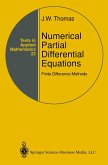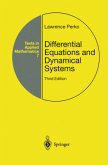Mathematics is playing an ever more important role in the physical and biological sciences, provoking a blurring of boundaries between scientific disciplines and a resurgence of interest in the modern as well as the clas sical techniques of applied mathematics. This renewal of interest, both in research and teaching, had led to the establishment of the series: Texts in Applied Mathematics (TAM). The development of new courses is a natural consequence of a high level of excitement on the research frontier as newer techniques, such as numerical and symbolic computer systems, dynamical systems, and chaos, mix with and reinforce the traditional methods of applied mathematics. Thus, the purpose of this textbook series is to meet the current and future needs of these advances and encourage the teaching of new courses. TAM will publish textbooks suitable for use in advanced undergraduate and beginning graduate courses, and will complement the Applied Math ematical Sciences (AMS) series,which will focus on advanced textbooks and research level monographs. Preface As in Part I, this book concentrates on understanding the behavior of dif ferential equations, rather than on solving the equations. Part I focused on differential equations in one dimension; this volume attempts to understand differential equations in n dimensions. The existence and uniqueness theory carries over with almost no changes.
Hinweis: Dieser Artikel kann nur an eine deutsche Lieferadresse ausgeliefert werden.
Hinweis: Dieser Artikel kann nur an eine deutsche Lieferadresse ausgeliefert werden.
.H. Hubbard and B.H. West
Differential Equations: A Dynamical Systems Approach
"As attention has moved from idealized linear differential equations to the nonlinear equations of the real world, there has been a concomitant change of emphasis, even a paradigm shift, from quantitative methods, analytical and numerical, to qualitative methods. Though qualitative methods originated with Poincaré (Poincare) early in this century, the era of large-scale computation and computer graphics has spurred development through a profound confluence of theory and experiment. Hubbard and West demonstrate convincingly that it is feasible and necessary to incorporate this sophisticated viewpoint into the most elementary stages of differential equations pedagogy, even where the focus is still on linear equations. This is an unusual book in being both rigorous and squarely addressed to those students with the most practical needs. The well known exchange value between pictures andwords is thoroughly exploited to ground fundamental concepts."-CHOICE
Differential Equations: A Dynamical Systems Approach
"As attention has moved from idealized linear differential equations to the nonlinear equations of the real world, there has been a concomitant change of emphasis, even a paradigm shift, from quantitative methods, analytical and numerical, to qualitative methods. Though qualitative methods originated with Poincaré (Poincare) early in this century, the era of large-scale computation and computer graphics has spurred development through a profound confluence of theory and experiment. Hubbard and West demonstrate convincingly that it is feasible and necessary to incorporate this sophisticated viewpoint into the most elementary stages of differential equations pedagogy, even where the focus is still on linear equations. This is an unusual book in being both rigorous and squarely addressed to those students with the most practical needs. The well known exchange value between pictures andwords is thoroughly exploited to ground fundamental concepts."-CHOICE








